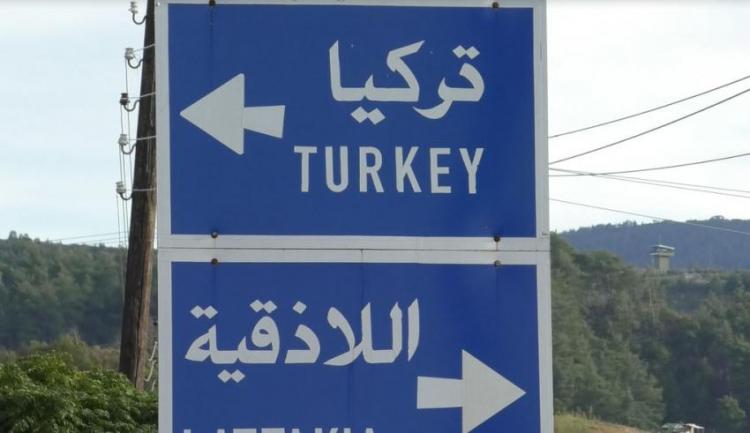Borders of Fire. Expectations of Intense Fighting Ahead
Lattakia – North-Press Agency
Since its independence in 1946, the Syrian-Turkish borders haven't been in a normal state, but have always been a region of conflicts and crises, which began before independence, when Turkey annexed the Syrian Iskenderun Brigade in 1938 in cooperation with the French Mandate, passing through the water crisis during the 1990s, and accusing the Syrian government of harboring and training members of the Kurdistan Workers Party (PKK) and that it is using the Kurdish card to destabilize the Turkish security.
Years of crisis between the two countries longed despite the temporary attempts of rapprochement, when Erdogan came to the presidency of Turkey, and the great sympathy which occurred between Damascus and Ankara to the extent that, the visa between the two countries was canceled and the borders were opened, which on several occasions, were about to spark bloody wars between the two sides.
However, the Turkish mask fell soon at the moment of the start of the Syrian crisis in 2011, which allowed the Turkish government to pass its projects and to return its expansionist ambitions by supporting the armed opposition groups, it has broken the borders, stolen cities and factories and threatened the world with the Syrian refugees who tried to take shelter from the bloody war.
Training camps on the borders
Many of the battles were led and thousands of militants were brought in across these borders.These areas have turned into training camps and headquarters where the militant groups are holed up to threaten the peace and security of the civilians. Borders of approximately 822 km have now become a starting point for division and expansion projects under the pretext of supporting civilians.
Since then, the Syrian government forces on one hand and the SDF in some areas on the other have been fighting a battle of existence against those armed opposition groups to which Turkey has given all political and military support.
These battles included some periods which allowed politics to avoid further bloodshed, it was Astana and Sochi Agreements, which the Turkish government used to rearm and retrain these groups.
During this period, the northern areas stretching from Aleppo countryside through Idlib and reaching the Syrian coast on the Mediterranean witnessed almost total control of the of Hayat Tahrir al-Sham HTS (formerly al-Qaeda’s affiliate Jabhat al-Nusra).
Many of these groups have been reconstituted and renamed by new names in the hope of eliminating terrorism on them, Turkey has thrown some of them into the two battles of Euphrates Shield and Olive Branch in the northern countryside of Aleppo.
At this time, the Syrian government forces were preoccupied with their battles in the desert and southern Syria, regaining control over them and securing the land crossings, such as Jaber-Nassib with Jordan and al-Qaim-AlBuKamal with Iraq, where the importance of regaining these crossings has returned to the forefront again, where there are 11 land crossings which link between Syria and Turkey but they are now the title of the battles.
Critical days to come
According to a military source in the Syrian government forces, battles are expected to further intensify, where Syrian military build-up is increasing along the lines of clashes and confrontation in the northern countryside of Aleppo, southern countryside of Idlib and Jisr al-Shughour to Latakia countryside, where Kabenah hills are located to the northeast of Latakia and they directly supervising the city of Jisr al-Shughour, which is considered an important and strategic gateway to launch the battle of the restoration of Idlib, especially as it has difficult terrain the matter makes smuggling difficult, and it is adjacent to the bordering strip of Turkey.
This strategic area is controlled by the Turkistan Islamic Party, with the support of the defeated Jaysh al-Izza group in the battles of the northern Hama countryside and Khan Shaykhoun, which the Turkish government and these groups have exploited them to establish training camps, to pass arms and to fortify in as they are adjacent to the Syrian-Turkish borders.
It is considered a link among the rest of the controlled areas by the armed groups and a center which threatens the areas under the control of the government forces in the coastal mountains and the military base of Hmeimim, where the Russian forces are located.
"Critical days to come" in the words of the military source, the status-quo cannot be maintained, especially with the Turkish developments in the east of Euphrates areas. The factors which may accelerate the battle to recapture Idlib so that the government forces devote more to the greater danger which threatens thousands of civilians, energy sources and the Syrian food basket in northeastern Syria.

